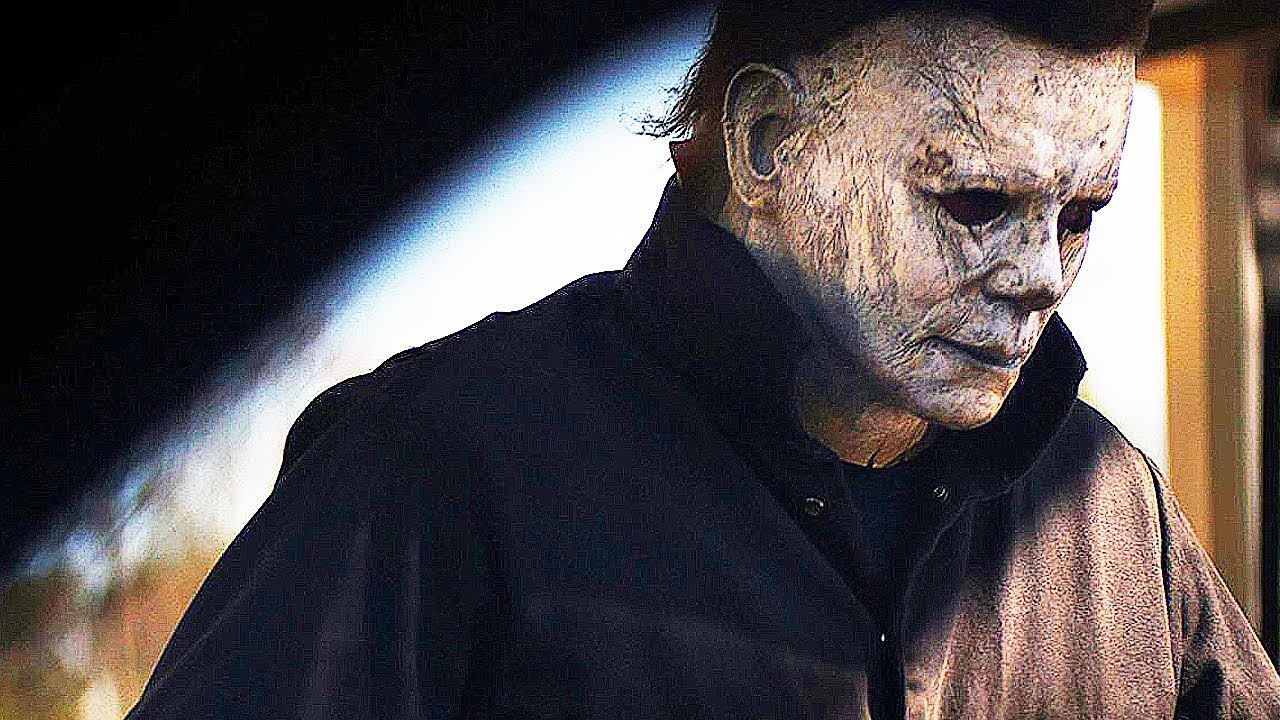John Carpenter is my favorite director. As a teenager, The Thing drew me from from wanting to work in special effects into wanting to make movies in general. His run from the 1970s through part of the 1990s is, in my opinion, unparalleled. I’ve also appreciated his nonchalant response to the remakes and sequels to his movies. He’s been content to have his name in the credits as an executive producer, cash his checks, and smoke pot while playing video games. So when Carpenter expressed his genuine enthusiasm for David Gordon Green and Danny McBride’s pitch for a direct sequel1 to his groundbreaking and influential slasher film Halloween, I suddenly found myself excited for the film. My excitement felt wrong somehow, but as it turns out it was not misplaced.
While the new movie doesn’t approach the level of Carpenter’s original, which is a high bar to clear, it is an entirely entertaining and well crafted piece of horror filmmaking. It builds off of what the original did in crafty ways, and elaborates on themes that the slasher genre has often ignored.
Following in the tradition of The Thing, this sequel is confusingly given the same name as the original, but instead of over-explaining and draining the intrigue out of the story in the way the 2011 prequel to The Thing did, Halloween extrapolates. Picking things up in the modern day, we find Michael Meyers (Nick Castle, reprising his role, and James Jude Courtney) locked up in an insane asylum. Laurie Strode (Jamie Lee Curtis) has gone full-on survivalist, still traumatized by the events of that infamous night 40 years ago. The night he came home. That trauma is part of what makes the film work so well.
It would have been easy to make Laurie just a gun-toting badass; the one Cassandra figure who knows what the threat is and is prepared to take it on. I mean, she is that, but that isn’t all. Because of what she went through as a teen, Laurie is emotionally unstable, consumed by her obsession with the man—the shape—that killed her friends and nearly killed her. She’s estranged from her daughter Karen (Judy Greer) and her granddaughter Allyson (Andi Matichak), the later of whom only refers to her by the stilted and formal name “Grandmother.” That honesty about the effects of trauma, which the audience is never bludgeoned with, gives the film a weight that most slasher sequels lack.
Adding to that weight is how the film portrays Michael’s potential victims. Once Michael inevitably escapes (spoiler alert), the movie wisely avoids the traditional slasher slut-shaming that Carpenter’s original film inadvertently spawned. Almost everyone in this film that ends up at the business end of a butcher knife is introduced in a humanizing way, whether that’s through humor or acts of heroism or even simple acts of kindness. In one particular case the trope of the DGAF horny babysitter is subverted, establishing that she is in fact horny, and that there is nothing wrong with that, but that she is a decent and kind and responsible person who also cares deeply about her ward for the night. There’s actually a feminist undercurrent to this movie that moves past the rote “final girl” convention.
That humanization leads to something that is pretty rare in the slasher genre: we don’t want Michael to kill people. I’m as guilty as any other horror nerd who spent his teen years with his nose buried in issues of Fangoria of craving some gory carnage in my horror movies, which might say some unpleasant things about my psychology. But with Halloween I spent much of the running time cringing, hoping against hope that these nice folks would make it to the closing credits without dealing with a whole bunch of stabbing. Or head-smashing. Or strangling.
Speaking of which, I have to warn my fellow gore-hounds that Halloween isn’t particularly innovative in its kills. It’s certainly more brutal than the relatively bloodless original, but there’s nothing as iconic as Michael’s fogged windshield murder of Annie Brackett. There are no “holy shit” moments that will live in horror legend, but that’s okay. Again, we don’t want these folks to be killed, so even when they’re killed off screen it feels raw. And sad. I don’t know what I expected when I walked into a sequel to Halloween, but it certainly wasn’t tragedy being treated as such.
It’s an odd comparison to make, but Halloween reminds me a bit of Wes Craven’s New Nightmare. It’s obviously not a full on meta take on the franchise in the way that film was.
Jamie Lee Curtis doesn’t show up playing Jamie Lee Curtis. But it serves as a direct followup to the original, “ignoring” the sequels while also playing with and subverting the tropes of the films that the original directly or indirectly spawned.
And that’s perfect. It’s a slasher movie that knows it’s a slasher movie, and has fun with that, while also taking itself seriously in that role. See this movie. And by see it, I don’t mean catch it on Netflix.
Go see it in a theater. See it with an audience. My experience was glorious, with folks hooting and laughing and screaming around me. It scratches that itch for horror movie thrills while also making you give a damn. I couldn’t ask for anything more.
Also, Carpenter composed the score. It’s great. But you probably suspected that already.








